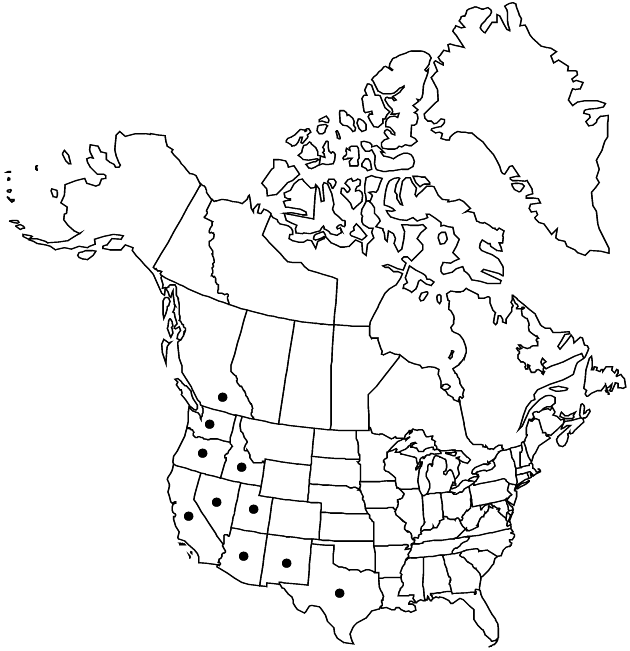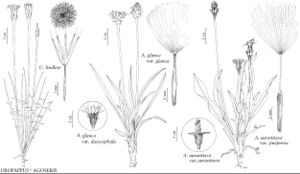Difference between revisions of "Uropappus lindleyi"
Trans. Amer. Philos. Soc., n. s. 7: 425. 1841.
Common names: Lindley’s silver puff
Illustrated
Basionym: Calaïs lindleyi de Candolle in A. P. de Candolle and A. L. P. P. de Candolle, Prodr. 7: 85. 1838
Synonyms: Microseris lindleyi (de Candolle) A. Gray Microseris linearifolia (Nuttall) Schultz Bipontinus Uropappus linearifolius Nuttall
imported>Volume Importer |
imported>Volume Importer |
||
| Line 69: | Line 69: | ||
|publication year=1841 | |publication year=1841 | ||
|special status=Illustrated | |special status=Illustrated | ||
| − | |source xml=https:// | + | |source xml=https://bitbucket.org/aafc-mbb/fna-data-curation/src/2e0870ddd59836b60bcf96646a41e87ea5a5943a/coarse_grained_fna_xml/V19-20-21/V19_492.xml |
|tribe=Asteraceae tribe Cichorieae | |tribe=Asteraceae tribe Cichorieae | ||
|genus=Uropappus | |genus=Uropappus | ||
Latest revision as of 19:52, 5 November 2020
Leaves 5–30 cm. Peduncles 5–40 cm. Involucres 10–40 mm after flowering. Phyllaries reflexed in fruit, oftenreddish, outer 2–8, inner 3–18. Ligules 2-–10 mm, equaling or barely surpassing phyllaries at flowering. Cypselae 7–17 mm; pappi: scales 5–15 mm, apices notched 1–2 mm, bristles delicate, 4–6 mm. 2n = 18.
Phenology: Flowering Mar–May.
Habitat: Grasslands, shrub steppe, open oak woodlands, chaparral, s coastal scrub, deserts, usually well drained soils on slopes, road banks, serpentine gravels, sandy desert flats
Elevation: 10–1800 m
Distribution

B.C., Ariz., Calif., Idaho, Nev., N.Mex., Oreg., Tex., Utah, Wash., Mexico (Baja California, Sonora).
Discussion
Uropappus lindleyi grows in the Columbia-Snake Rivers Plateau Province, Basin and Range Province, Interior Mountains and Plateaus System, and the Pacific Border System.
Selected References
None.
Lower Taxa
None.
... more about "Uropappus lindleyi"
